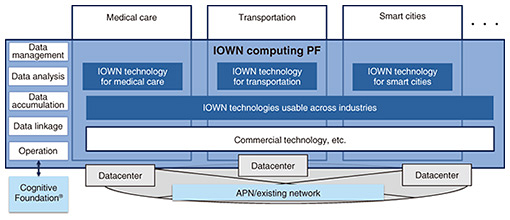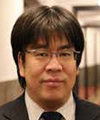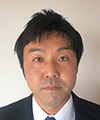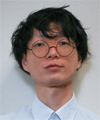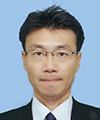 |
|||||||||||||||||||||||||||||||||
|
|
|||||||||||||||||||||||||||||||||
|
Feature Articles: Platform Technologies Supporting Data Governance Vol. 21, No. 4, pp. 71–76, Apr. 2023. https://doi.org/10.53829/ntr202304fa10 Early Deployment and Popularization of IOWN Technologies as Targeted by IOWN Product Design CenterAbstractThe IOWN Product Design Center aims for early implementation and popularization of Innovative Optical and Wireless Network (IOWN) technologies. Through these activities, the center plans to experimentally demonstrate how IOWN will create new value in various industries by combining multiple IOWN and commercial technologies. The efforts of NTT laboratories to demonstrate a combination of IOWN technologies, including fundamental technologies that support data governance, are described in this article. Keywords: IOWN, IOWN Product Design Center, data governance 1. The IOWN conceptThe Innovative Optical and Wireless Network (IOWN) aims to transform existing information and communications systems and implement a new infrastructure that transcends the limitations of current information and communications technology (ICT) [1]. IOWN covers three major technical fields: (i) the All-Photonics Network (APN) provides end-to-end optical wavelength paths from terminals to networks via photonics-based technologies; (ii) Digital Twin Computing enables future prediction by combining the real and digital worlds; and (iii) the Cognitive Foundation® connects and controls all things/devices. With the APN, light is transmitted from terminals to the network without electrical conversion, and such light-only end-to-end transmission results in unprecedented low power consumption, high quality, large capacity, and low latency, which are practically unachievable with current electronics-based technologies. Digital Twin Computing reproduces real-world objects as digital twins in a computer, enabling future prediction and optimization by combining digital twins with one another and with the real world. The Cognitive Foundation® harmonizes all ICT resources into a holistic optimum and optimally controls ICT resources, such as the cloud and edge, as well as networks and even terminals. The goal is to create a more prosperous society by using these technologies to improve the quality of connections among people and between people and society through the real-time and fair distribution of information that encompasses a variety of values. 1.1 Initiatives of the IOWN Product Design CenterThe IOWN Product Design Center aims to implement and popularize IOWN technologies as early as possible. To that end, we are formulating development and expansion strategies for IOWN technologies back-cast from market needs and societal demands and promoting activities such as technology development and demonstrations on the basis of those strategies [2]. Through these activities, we aim to (i) identify potential market needs through demonstrations with various companies, such as those participating in the IOWN Global Forum [3], government agencies, universities, telecommunications-equipment manufacturers, the NTT Group, and other companies and (ii) improve IOWN technologies by repeatedly demonstrating their value. By combining multiple IOWN and commercial technologies, we aim to increase the value that meets market needs and social demands while promoting the early implementation and popularization of these IOWN technologies. In the following sections, we introduce our demonstration plan for further expanding IOWN technologies by using the fundamental technology supporting data governance being developed by NTT laboratories and present examples of the new value created by IOWN. 2. The APN and secure optical-transport-network technology2.1 Implementation of secure optical long-distance transmissionAs mentioned above, the APN enables direct communications on the optical layer. Even in the case of conventional transmission networks, devices are connected by optical fibers. However, to cope with the attenuation of light over transmission distances and to switch light paths, it is often necessary to (i) convert the light into electrical signals in the transmission equipment at regular distance intervals and at each branching path and (ii) convert the electrical signals back into light and retransmit them. In contrast, advances in digital coherent technology—which NTT laboratories have been researching and developing for many years—have enabled high-speed, long-distance, large-capacity transmission using optics, and the APN uses the technology to enable end-to-end optical transmission [4]. The APN is optical from end to end, and by greatly reducing the processing required to convert electrical signals to optical signals and vice versa, it helps reduce power consumption in the form of a low-delay, low-fluctuation network. Even when processing with light, it is necessary to take measures against security risks in the same way as when processing with electrical signals in the conventional manner. One way to meet that security requirement is through secure optical-transport-network technology*1 (see Fig. 1).
With this technology, keys are exchanged in a way that even a quantum computer cannot decipher. Keys are used for encryption to ensure secure communications. NTT has demonstrated that 8K60P uncompressed video can be transmitted securely at a data rate exceeding 40 Gbit/s with ultra-low latency [5]. 2.2 Potential use cases for remote concerts, cloud gaming, and remote surgeryWe are conducting various demonstration experiments using end-to-end optical transmission via the APN and secure optical-transport-network technology. One use case of the APN is remote concerts using uncompressed, bi-directional video communications that takes advantage of low latency. Two remote concert venues are connected with low latency that enables simultaneous enjoyment at both venues by real-time two-way transmission of musical performances and audience responses. Another use case is cloud gaming. A communications environment with as little latency as possible is an important factor, and differences in the amount of latency between remotely located players can affect the outcome of the game. We are building an environment that uses technology to achieve low and uniform latency under such conditions and continuing to experimentally demonstrate comfortable and fair cloud gaming. The final use case is in the field of medical care, specifically, remote surgery. Remote surgery requires that the manipulations of the surgeon be transmitted quickly and reliably to a remote robotic arm. Satisfying that requirement necessitates not only low latency but also a low-fluctuation communications environment with ensured tight security. We have started demonstrations to establish such an environment by applying the characteristics of the APN and secure optical-network-transport technology. 2.3 Potential use case for an inter-datacenter networkThe APN is also being used to connect datacenters by taking advantage of their high-speed, wide-bandwidth, and low-latency characteristics. Computing resources are expected to be distributed over a wide area [6], so we are also considering the use of long-distance remote direct memory access (RDMA)*2 for the data plane. While RDMA was developed for short distances (up to 10 m) within a datacenter, long-distance RDMA enables data transfer over long distances by connecting datacenters via the APN; thus, it will be possible to use the computing resources of multiple remote datacenters as if they were a single datacenter. However, data communications that were previously closed within a datacenter—thus protected from external security threats—must now pass through external paths due to the application of long-distance RDMA, so it has become necessary to ensure secure data communications on those paths. We plan to apply the secure optical-transport-network technology to meet this need and have started experimentally demonstrating this technology application.
3. IOWN computing platform and the Trusted Data Space3.1 IOWN computing PF for Digital Twin ComputingDigital twin refers to a technology that uses data collected from the real world to create the same world (a twin) in cyberspace. As part of IOWN, Digital Twin Computing—based on such digital twins—has been proposed. Digital Twin Computing enables simulations by freely combining, in cyberspace, data concerning objects and people in various industries. It also makes it possible to predict the future by using highly accurate data concerning objects and people. This prediction requires an environment in which data can be appropriately processed and advanced calculations possible, and the IOWN computing platform (PF) enables such an environment (Fig. 2).
The IOWN computing PF implements each IOWN technology to contribute to the creation of new value in various businesses by making it possible to collect and analyze data across multiple industries. In the following sections, issues related to handling of data—from collection to analysis—are described, and potential use cases of new-value creation via the IOWN computing PF are presented. 3.2 Data handling for creating new valueThe IOWN computing PF will handle large amounts of data in a variety of industries. Some of the data are unique to individuals or companies, and the confidentiality of the data must be guaranteed. Data are unevenly distributed across industry boundaries and stored in various locations; thus, it is necessary to integrate them for efficient handling. Implementing IOWN will make it possible to implement the technologies that can address such issues concerning data handling. When personal or company-specific data are being handled, the data must be analyzed in a confidential manner. To meet this need, we developed the Trusted Data Space [7], which integrates multiple IOWN technologies, i.e., secure computation technology*3[8], secure matching technology*4, and data sandbox technology*5, to ensure data confidentiality. The Trusted Data Space will be implemented on the IOWN computing PF in a manner that ensures safe and secure data handling. For handling data unevenly distributed across various locations, it is necessary to enable both (i) sending and receiving of large amounts of data and (ii) integration and analysis of unevenly distributed data. To meet these requirements, we are developing a next-generation data hub [9] by integrating two IOWN technologies, i.e., data broker*6 (enabling efficient data transmission and reception among multiple locations) and virtual data lake*7 (enabling efficient data retrieval and acquisition by virtually integrating data from multiple locations), and implementing them on the IOWN computing PF. We will solve various problems facing data handling by combining IOWN technologies and commercial technologies as necessary and contribute to creating new value by implementing advanced data handling on the IOWN computing PF. 3.3 Potential use case 1: Creation of new value in the medical industryIn the medical industry, the handling of personal medical and behavioral data is expected to create new value such as predicting health risks and changing people’s behavior to improve their health. To create such value, it is necessary to increase the accuracy of forecasts and analysis; however, meeting this need requires a large amount of sample data. The data to be handled are sensitive, so there is a high psychological barrier for individuals to grant permission to use such data, and it is difficult to collect and use the data for analysis. Such data are ubiquitously accumulated in the data-management environment of each data owner, so comprehensive analysis of the data is also an issue. The IOWN computing PF solves various issues by enabling analysis and processing of data under the control of the data owner in a manner that does not disclose sensitive data to third parties. IOWN technologies include the Trusted Data Space, which enables analysis of data while keeping the data confidential, and virtual data lake, which integrates and handles ubiquitous data. These technologies make it possible to handle large amounts of sensitive data, improve prediction and analysis accuracy, and contribute to building a prosperous society in which people can live in good health. 3.4 Potential use case 2: Creation of new value in the transportation industryIn the transportation industry, we expect to create new value from a wide variety of data by (i) reproducing and analyzing ever-changing location information, such as vehicle sensor data and personal GPS (Global Positioning System) data, in a digital space and (ii) encouraging individuals to change their behavior to reduce traffic congestion. To create value in this manner, it is necessary to reproduce and analyze movement data managed by each individual or multiple companies in real time. However, it is generally difficult to process the wide variety of data generated from moment to moment in a practical time frame. Data that are the source of competitiveness for the owners are also practically challenging to share across several companies. The IOWN computing PF solves the above problems by handling a wide variety of data in real time without disclosing competitive data managed across multiple companies to third parties. In addition to the Trusted Data Space and virtual data lake, IOWN uses data broker for efficient transmission and reception of data from multiple locations. These technologies enable data sharing among multiple companies and efficient handling of ubiquitous data that change from moment to moment and contribute to solving social issues such as mitigation of traffic congestion.
4. Future developmentsThe first step in actualizing IOWN is to collaborate with companies participating in the IOWN Global Forum, government offices, universities, communications-equipment manufacturers, the NTT Group, and various other companies in conducting demonstration experiments using IOWN technologies. Through this collaboration, we will steadily create new value by breaking down the boundaries among industries. The IOWN Product Design Center will continue to promote various activities for gaining knowledge and feedback to improve IOWN technologies and create new value. References
|
|||||||||||||||||||||||||||||||||


